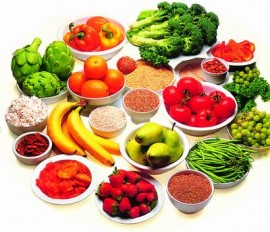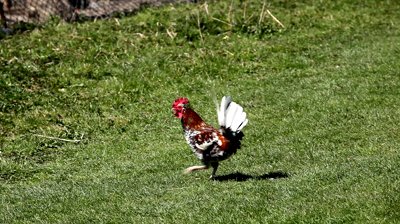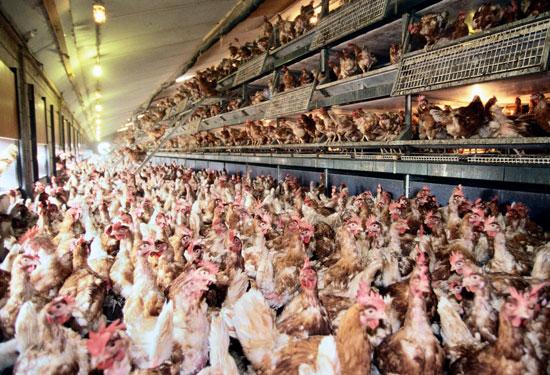 Guest Post by the creator of The Truth About Fat Burning Foods, Nick “The Nutrition Nerd” Pineault
Guest Post by the creator of The Truth About Fat Burning Foods, Nick “The Nutrition Nerd” Pineault
Your healthy food sucks.
Wait a minute….
What the hell is this nerd talking about?
Let me explain.
What I mean is… your healthy food probably sucks.
You know the grass-fed beef, free-range eggs, alternative sweeteners, olive oils, etc. that you’re paying a boatload of money for? They’re not what you think.
After spending hundreds of caffeinated hours in front of my computer being the real self-educated nutrition nerd I am, I realized that most people get scammed when shopping for the high-end, unprocessed, nutrient-dense foods that Jay advocates.
Including you.
This needs to be fixed… right now.
Your Grass-Fed Beef Sucks
When it comes to health and performance, grass-fed beef is the obvious choice.
Why do you want to stick to grass-fed beef instead of the grain-fed, feedlot-raised kind?
– The omega-3/6 ratio: grass-fed beef contains 2 to 5 times more omega-3 than its grain-fed cousin (1)
– CLA: conjugated linoleic acid, for the nerds out there. Grass-fed beef contains 2-3 times more of that natural cancer-fighter and fat burner than grain-fed beef
– Vitamins & minerals: you can get plenty of those if you eat as much grass-fed steak than Jay can devour on a Friday night. Grass-fed beef contains 4 times the vitamin A and E compared to the cheap stuff, and a ton more minerals including zinc, iron, phosphorus, sodium, and potassium (2)
More nutrition, less inflammation, and the ability to keep your wife very happy (the natural increase in testosterone from a high-fat high-cholesterol diet (3) is always welcome). Grass-fed wins hands down.
Here’s the problem: most grass-fed beef from your average supermarket probably doesn’t show any of these benefits.
To cut on costs, it’s common practice that manufacturers send their grass-fed animals to a feedlot for the last 1-2 months of grain fattening.
After only 30 days of a grain-fed diet, away goes your CLA, omega-3 and perfect fatty profile.
It sucks, I know. You end up buying a “grass-fed” beef that’s almost identical on a nutritional standpoint that the grain-fed stuff.
Hold on! The Government should do something about it!
I wish…
Even if the USDA has changed regulations about the use of the marketing term “grass-fed” in 2007 to make sure it really means the cattle are 100% grass-fed for their entire life… turns out that the whole regulatory program is applied on a voluntary basis.
Let me rephrase that.
Manufacturers who used to send their cattle to the feedlot and “grain-finish” them to cut on costs may, or may not, choose to adhere to these strict rules and lose a ton of money in the process. You get the point.
To find real grass-fed beef, you must look for the mention “USDA grass-fed”. Or – even better – visit your local farmer and talk with the guy mano-a-mano.
Make sure your beef is grass-fed all the way through, and enjoy the superior nutrition.
Your Omega-3 Free-Range Eggs Are Basically Worthless
The next best scam these days happens at the eggs aisle in your supermarket.
If you’re just looking to buy freakin’ eggs and be done with it, the cheapest eggs will still be a great choice.
But if you’re looking to buy eggs that are as close to farm fresh as possible to get the extra nutrition – they’ve been shown to contain 2 to 4 times more vitamin A, vitamin E and omega-3 than the factory-raised kind – a “good luck dude” is in order…
When you read “Free-range”, “Cage-free” or “Pasture-raised” on your egg carton, you probably picture this chicken, hanging out in the sun…

The truth is that the eggs you buy probably come from these guys…

That’s because the marketing terms on eggs are poorly regulated.
Some definitions explained… (4)
Free-range: animals must have access to the outdoors. An over-crowded barn that has a door installed but always closed falls in that category.
Cage-free: same idea. Hens can still be stacked 3 layers high and still be called cage-free. California will become an exception in 2015, thanks to our buddy Arnold. (5)
Pasture-raised: has no standard. Anyone can use this claim.
Hormone-free: completely meaningless, because hormones are never used to grow chickens in North America anyway.
Again, if you want real, nutritious farm-fresh eggs, you’ll have to actually call the farmer up and make sure his hens are healthy and allowed to roam around.
Yes, that means you’ll have to call someone with an actual phone. That’s how things used to work before the Internet.
One last thing – omega-3 eggs are a complete scam.
Farmers give their hens a 20% flax diet to increase the omega-3 content in your eggs, and charge extra for it.
What they forgot to tell you is that the added omega-3 is ALA (which makes sense, because flax contains a lot of it), not the usual EPA or DHA contained in animal products.
In simple terms, ALA sucks to improve your omega-3 levels, because it needs to be converted to EPA or DHA before being absorbed. A minimum of 95% of the ALA is lost in the process. (6)
Your Olive Oil May Be Counterfeit By The Damn Mafia (Not Even Kidding)
I don’t make this stuff up.
Tom Mueller, author of the book “In Extra Virginity: The Sublime and Scandalous World of Olive Oil”, exposed last year how up to 70% of all olive oils are counterfeit – which means they’re mixed with cheaper olive oils or even refined vegetable oils. (7)
The corruption on the olive oil market is so serious they could make a movie out of it.
They could cast Leonardo DiCaprio as the bad gangster selling fake oil, and Marion Cotillard as the Italian beauty who wears a tight black dress…
But I digress.
The point is that if you plan on using olive oil on your salads – or on everything you eat if you’re a skinny maggot like me who needs a ton of extra calories – you’re better off making sure your oil is legit.
Quality olive oil = antioxidants, vitamins A, E, and K
Cheap olive oil = inflammation, little nutrition (not really better than the oil they use at KFC)
Make your choice.
What you need is “extra-virgin” olive oil of the highest quality and freshness possible. The same oil that Spartans used to drink before combat. The same oil that’s going to make your manliness even more manly.
So sticking with the extra-virgin kind is good, but according to the latest studies, it’s just not enough…
Tests by Consumer Reports have concluded that 61% of extra virgin olive oils shouldn’t be labeled as such, (8) while the UC Davis Olive Center found that 73% of extra virgin oils did not meet the standards. (9)
To make sure your olive oil is 1) extra-virgin AND 2) really extra-virgin; your best bet is – once again – finding an importer you can trust. Small specialty stores are perfect spots if you live in a major city.
Also, verify that your olive oil is sold in a dark glass bottle (to preserve quality and avoid oxidation from light), and that there’s a harvest date on the bottle.
All olive oils should be consumed within about two years of harvest, unless stated otherwise.
Is This Nerd Freaking Out?
That’s a fair question.
I’m not questioning the fact that any kind of beef, eggs or olive oil will be better than pizza and French fries to support your immune system and entire health.
There are worse and better choices out there.
But if you want to get to the next level of performance, I strongly believe that looking for the healthiest foods possible is a smart goal.
(Note from Jay: I STRONGLY agree)
And when you do choose to invest more time and money to find those foods, you might as well know what the hell you should be looking for. Maybe that’s just me…
It’s possible I make everything sound very science-heavy or more complicated than it should, but that’s just who I am.
Here’s the short version for you…
Forget everything you just read, find a local farmers market, and meet people who are in charge of growing your food.
These people will get you healthier faster than any doc or pill.
*****
Stay tuned for part 2 and in the meantime hit the Like button if you enjoyed this post.
Nick Pineault is the author of The Truth About Fat Burning Foods, where you’ll find hundreds of other food truths.
Click HERE to check it out.
References:



